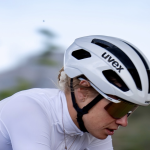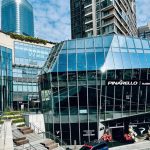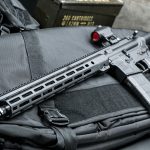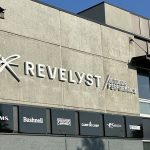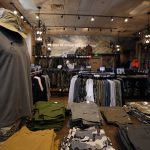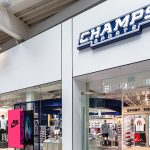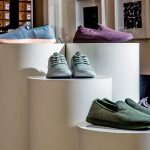Puma AG passed the two billion euro mark for the first time in 2006 and looked to be on track to achieve its Phase IV objectives, but the work toward those goals continued to cause pain in the fourth quarter. Sales in the Americas and Asia Pacific got a nice boost from the continued consolidation of former distributors into the Group, but a planned reduction in sales to a major U.S. customer kept growth in the region in the single-digits, while backlog in the U.S. posted a decline at year-end.
The company reported that fourth quarter consolidated sales increased 37.6% to 480.6 million ($620 mm) from 349.2 million ($415 mm) in the year-ago period. Currency fluctuations had a big impact on the results for the quarter as currency-neutral sales increased 43.3%. Footwear sales rose 23.5% (30.3% c-n) to 273.2 million ($352 mm) from 221.3 million ($263 mm) in Q4 last year. Apparel was the big winner for the quarter, jumping 75.6% (79.4% c-n) to 177.4 million ($229 mm) from 101.0 million ($120 mm) in the year-ago period. Accessories revenues grew 11.2% (16.9% c-n) to 29.9 million ($39 mm).
On a regional basis, the EMEA region, which includes Europe, the Middle East, and Africa, saw sales for the fourth quarter increase 11.8% (12.8% c-n) to 180.3 million ($233 mm) from 161.2 million ($192 mm) in the year-ago period. The Americas region posted a 28.4% increase for the quarter to 175.2 million ($226 mm), compared to 136.4 million ($162 mm) in Q4 last year. Currency-neutral sales were up 37.2% for the period. The Americas benefited greatly from the integration of Mexico, Argentina, and Canada into the Puma Group. Sales in Asia Pacific, which got a boost from the integration of Japan Apparel, Taiwan, China, and Hong Kong into the Group, jumped 142% to 125.1 million ($161 mm) from 51.6 million ($61 mm) in the year-ago period.
Sales in the U.S. rose just 5.0% for the quarter when measured in U.S. Dollars, posting sales of $141.8 million in Q4 2006 versus $135.0 million in the year-ago quarter.
Gross margins contracted a bit for the quarter, declining 220 basis points to 47.7% of sales, compared to 49.9% of sales. Operating profit decreased 9.5% to 41.7 million ($54 mm), compared to 46.1 million ($55 mm) in the 2005 fourth quarter. Net earnings fell 25.6% for the quarter to 32.8 million ($42 mm), or 2.03 per diluted share, compared to 44.1 million ($52 mm), or 2.76 per diluted share, in the same period last year.
The EMEA region closed the year with backlog up 4.6% to 652.7 million ($862 mm). Currency-neutral backlog was up 6.2% in the region. The Americas, which got a lift last year from both a strengthening U.S. business and the inclusion of the Argentina and Canada subsidiaries, saw backlog rise just 3.5% (+4.6% c-n) to 271.2 million ($358 mm) after more than doubling last year. U.S. backlog took a hit from the weaker Dollar and the “planned reduction of sales with a customer,” declining 6.1% to $245.8 million at year-end, compared to $261.9 million a the end of the prior year period. In Asia, which saw the Apparel business in Japan as well as the Puma business in China, Hong Kong, and Taiwan consolidated for the first time last year, backlog was up 23.1% to 195.7 million ($258 mm) at year-end. Currency-neutral backlog was 35.8% at year-end.
Overall footwear backlog was up only 0.4% to 716.8 million ($946 mm), or a 6.1% increase when measured in currency-neutral terms. Apparel orders were up 15.3% (+20.3% c-n) to 340.2 million ($449 mm) and Accessories rose by 9.0% to 62.7 million ($83 mm).
Puma opened a total of 25 concept stores worldwide in 2006, giving the company a total of 91 concept stores at year-end, including stores operated by licensees. Revenues from owned-retail were up 39.5% to 344.3 million ($444 mm), accounting for 14.5% of revenues, compared to 13.9% of revenues in 2005.
Looking ahead, Puma AG sees revenue growth in the mid- to high-single-digit range after the 34% growth in 2006. Gross margins are expected to be in the same range as last year, coming in at 50% to 51% of sales, but SG&A is expected to decrease to approximately 34% of sales. The expense reduction as a percent of sales is forecast to lead to an improvement in EBIT to about 16% of sales, leading to double-digit growth in consolidated net earnings.
| Puma AG. | ||||||
| Full-Year Results | ||||||
| (in $ millions) | Full-Year Group Sales | Backlog Change | ||||
| 2006 | 2005 | Change | Neutral* | Euros | Neutral* | |
| Group Sales | $2,976 | $2,214 | 33.3% | 34.0% | 4.7% | 10.2% |
| EMEA | $1,456 | $1,376 | 4.9% | 5.1% | 4.7% | 6.2% |
| Americas | $909.6 | $593.2 | 52.0% | 51.8% | -5.3% | 4.6% |
| U.S. | $620.2 | $472.4 | — | 31.3% | — | -6.1% |
| Asia/Pacific | $611.2 | $244.5 | 147.8% | 155% | 23.1% | 35.8% |
| Footwear | $1,784 | $1,463 | 20.9% | 21.6% | 0.4% | 6.1% |
| Apparel | $999.2 | $590.2 | 67.8% | 68.1% | 15.5% | 20.3 |
| Accessories | $193.2 | $160.2 | 19.6% | 21.5% | 3.4% | 9.0% |
| Net Income | ||||||



